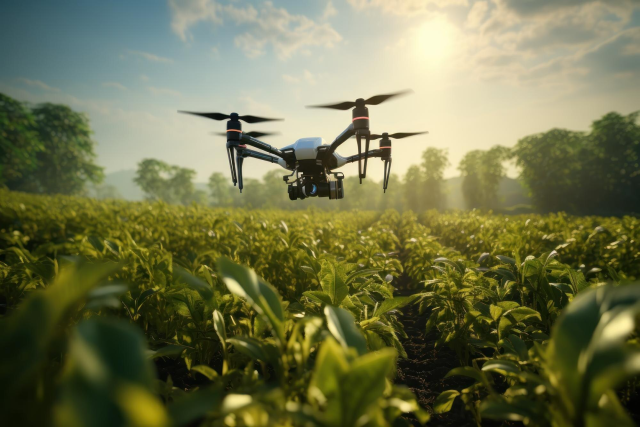
The emerging sector of agricultural robotics shows a lot of promise for changing the industry. Still, several farmers find it hard to embrace this leading technology. Other issues are limited availability of resources, need of technical expertise, and great cost. Solving these problems would give us a realistic answer and thus create the groundwork for effective agriculture robotics.
1.High Initial Costs: A Major Barrier to Adopting Farming Robots
One big impediment to agricultural robotics usage is their significant initial cost. Including autonomous tractors, drones, and harvesters, these sophisticated technologies might be cost. Such expenditures might be difficult for little-scale farmers or those with very little capital.
Solution: By seeking rental or financing options, so, farmers will have the technology more available free of the officially given cost. Moreover government assistance and funding for agricultural innovations help to save money. Sharing equipment with farmers next door also reduces robotic cost.
2. Lack of Technical Skills
Given the need of particular technical knowledge, people have trouble embracing agricultural robots. Particularly in more remote areas, several farmers might be short of vital instruction or support.
Solution: For farmers to go to classes given by equipment producers or Agritech company helps to address this issue. Many robotics businesses present online or seminar products for farmers to familiarize themselves with technology. Also helping to ensure a smooth automation transition would be a partnership with Agritech companies throughout the learning process.
3. Infrastructure Limitations
In some rural areas, current infrastructure would not work well for smooth running of farm robots. This addresses issues of bad ground conditions for robotics, low charging station availability, and slow internet access.
Solution: To support the data transfer needed for robotic applications, farmers could need better internet access through regional networks or satellite services. Moreover, some companies are developing devices intended to adapt to several surroundings, ensuring these systems will function in several land types and situations.
4. Uncertainty About Return on Investment (ROI)
Many ranchers are reluctant to get robotics for fear of little return on investment. Sometimes one may be slow to embrace new technology since it is not clear how automation—that is, labor savings, increased efficiency, and high output—can assist.
Solution: One solution could be for farmers to start small -scale robotic technologies including planting or weeding robots to observe their impact and return on investment. By gradually accepting robotics, farmers can learn and adapt without disturbing their activities.
5. Regulatory and Safety Concerns
Slowing the acceptance of agricultural robotics are regulatory issues in such labor rules and security levels. The applications of autonomous systems highlight concerns about their impact on the labour force and their adherence to present rules.
Solution: One way out is for farmers to stay up on local and federal robotics and automation regulations. Engagement with exactly businesses and politicians will help to remain ahead of legal changes and ensure adherence to standards. Over time too, robots are reluctantly permitted to tackle the labor displacement fears and this helps to run and maintain mechanical systems.
6. Resistance to Change
At last, fear of change or ignorance keeps lots of farmers from using modern technologies. Switching to robotics would seem rather difficult since conventional agricultural methods have worked for hundreds of years.
Solution: By using robots that buttress their current methods rather than outright replacing them, farmers first can enhance technology. Robotic systems for checking soil quality, for example, could fit with current farming methods with little or no changes needed. Furthermore, offering successful cases of different farmers who have efficiently adopted robotics will help to reduce stress and foster acceptance.
Conclusion: Overcoming Obstacles in Farm Automation
Although challenges are vital for adopting agricultural robotics, they are not insurmountable. Handling challenges such high cost, skill gaps, infrastructure restrictions, and legal issues allow farmers to totally adopt the advantages of agricultural robotics. Proper approaches can help the agriculture sector to advance toward more automation, therefore raising both stability and output.
Starting small, constantly learning, and leveraging current resources and collaboration can help farmers quick to recognize robotics make the change simpler. Major recommendations for implementing agricultural robotics entail phasing the technology, seeking financial support, and committing to continuous learning and training. Farmers may negotiate the obstacles of automation and welcome a future in which technology boosts the activity of agriculture by following these steps.






